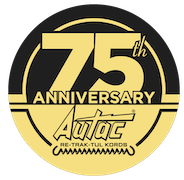The Importance of Proper Extension Cord Management
In our daily lives, managing extension cords effectively is key for keeping our spaces neat and safe. When cords are not properly stored, they can become a tripping hazard and even cause electrical problems. So, it’s not just about keeping your space tidy but also about ensuring safety and extending the life of your cords.
How to Roll Your Extension Cord the Right Way
- Start by Straightening Your Cord: Before you start rolling, lay out the extension cord on the ground. Make sure it’s straight and free of any knots or tangles.
- Pick Your Rolling Technique: There are different ways to roll a cord. The ‘over-under’ method is popular, but you can also do a simple coil. Choose a method that feels right for you.
- Keep the Tension: While rolling, pull the cord slightly. This helps to make sure your loops are even and prevents future tangles.
- Secure the Rolled Cord: Once you’ve rolled up your cord, use something like a strap or a special cord organizer to keep it in place. Avoid using things like rubber bands or tape because they can damage the cord.
Extra Tips for Keeping Your Cord in Good Shape
- Don’t Roll Too Tight: If you roll your cord too tightly, it can hurt the wires inside. Try to make gentle, loose loops.
- Store Your Cord Properly: Keep your coiled cord in a place that’s not too hot or cold and where it won’t get wet. This helps the cord last longer.
- Check Your Cord Regularly: Before you use your cord, always look it over for any damage like cuts or frays.
Picking the Right Extension Cord
When you’re choosing an extension cord, think about its thickness (gauge), how long it is, and what you need it for. A thicker cord (a lower AWG number) is better for big, power-hungry devices. If you need a cord for outside, make sure it’s made for outdoor use.
Safe and Efficient Cord Management
Knowing how to roll up your extension cord the right way is a small but important step in keeping your space safe and organized. With the proper technique and care, your extension cords will not only be easier to use but will also last longer.
The Benefits of Organizing Your Cords
Organizing your extension cords has several benefits. It prevents accidents, makes it easier to find and use your cords, and keeps your home or workspace looking clean. Also, well-maintained cords are less likely to become fire hazards.
The Do’s and Don’ts of Cord Rolling
- Do: Roll your cords loosely to avoid damaging the internal wires.
- Don’t: Never pull the cord too hard while rolling, as this can cause the wires inside to stretch and break.
- Do: Use the same rolling technique each time for consistency.
- Don’t: Avoid exposing your cords to sharp objects or edges that can cut or fray them.
How to Handle Longer Extension Cords
For longer cords, the process is the same, but you might need more space to lay the cord out fully. Sometimes, it helps to have someone else hold one end of the cord as you roll it up. This ensures that the cord stays straight and untangled.
Cord Maintenance: A Key Aspect
Regular maintenance of your extension cords is crucial. This includes cleaning them occasionally and storing them in a place where they won’t get damaged. Also, if you’re using your cords outdoors, make sure to bring them inside after use to protect them from the weather.
Creating a Safe Environment with Proper Cord Usage
Finally, using your extension cords safely is as important as storing them properly. Don’t overload your cords with too many devices, and make sure the cords you use are suitable for the power needs of your appliances.
Cord Management Equals Safety and Efficiency
By mastering the art of rolling and caring for your extension cords, you create a safer, more efficient environment, whether at home or in the workplace. Remember, good cord management is not just about convenience; it’s about practicing safety and ensuring the longevity of your tools. Remember these tips and become a pro at handling your extension cords!




Recent Comments